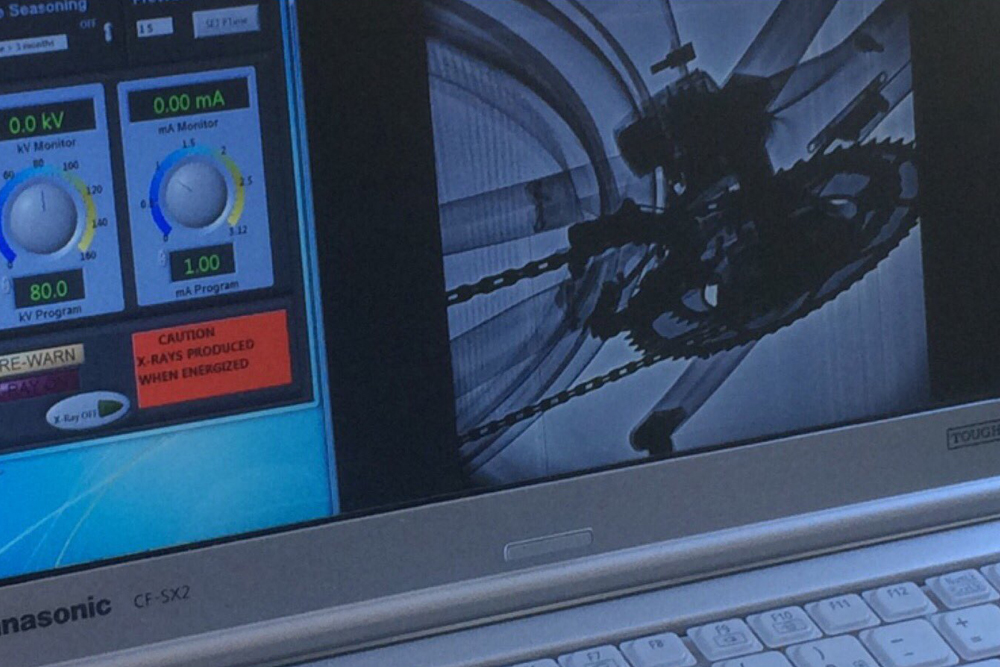UCI using x-rays to test for motors at the Tour de France
Time trial bikes tested using an x-ray machine on stage 13

Cycling's governing body the UCI today used x-rays to test for bikes at the Tour de France stage 13 time trial, part of its move to widen the number of methods used to prevent and detect so-called technological fraud.
>>> Brailsford denies Chris Froome's lack of attacks is due to motor checks
The tests, which were pictured in a tweet by Katusha, take place in a tent at the stage finish, with an operator taking an x-ray of the bottom bracket and seat tube, and any other parts of the bike that could possibly contain a motor.
Before the Tour de France the UCI announced that it would be employing "additional methods of detection" as well as the magenetic resistance tests that it has used in the past. We assumed that this would this would include the use of thermal imaging cameras, which the UCI had been criticised for not using after a Stade 2 documentary used them to claim that motors were being used at Strade Bianche and Coppi e Bartali.
>>> Did a UCI official tip off others over electric motor checks at 2015 Tour de France?
The UCI has also previously dismissed the use of x-rays as a method for detecting motors. In May, Mark Barfield, the governing body's Technical Manager, said that the UCI would not be using x-rays to find motors because of safety concerns, administrative difficulties, and the fact that the "image were not as clear as expected".
The latest race content, interviews, features, reviews and expert buying guides, direct to your inbox!
Henry Robertshaw began his time at Cycling Weekly working with the tech team, writing reviews, buying guides and appearing in videos advising on how to dress for the seasons. He later moved over to the news team, where his work focused on the professional peloton as well as legislation and provision for cycling. He's since moved his career in a new direction, with a role at the Department for Environment, Food and Rural Affairs.